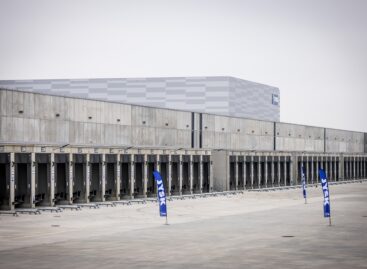Price caps and economic measures in Central Europe: more and more countries are protecting themselves against inflation
While the introduction of price caps is back on the agenda in Hungary, the topic in Poland is the extension of the electricity price freeze. Croatia has recently expanded the range of price-capped products to seventy. The countries of the region are thus trying to counteract the renewed rise in inflation with various means – we learn from the VG overview.
Price cap in Poland

The Polish government has already limited electricity prices and capped energy prices for the population at PLN 500 per megawatt. Although the restriction was originally introduced by the right-wing government in 2022, the new left-wing leadership maintained and extended it, namely so that it would only expire after the Polish presidential election in 2025.
Polish Climate Minister Paulina Hennig-Kloska confirmed in recent days that government intervention is still necessary, as electricity tariffs are not expected to decrease. The decision will be made based on the price proposals submitted by service providers by April.
Inflationary pressures in Central Europe
Inflation waves in Central Europe are traditionally stronger than in Western Europe. This is partly due to lower incomes and partly because the region’s economies are more sensitive to external price changes. In Poland, inflation stood at 4.7 percent at the end of the year, but the January data, due to be released on Friday, could well contain unpleasant surprises.
Consumer confidence in Poland is also weak, with the index nearing a one-year low and retail sales stagnating in the final months of the year. While price increases could dampen consumption, Hungary’s example shows that high inflation does not necessarily reduce the willingness to buy.
Related news
The Hungarian Confederation of Economic Workers also spoke out regarding the inflation data
🎧 Hallgasd a cikket: Lejátszás Szünet Folytatás Leállítás Nyelv: Auto…
Read more >Unilever to invest in food factory expansion in Poland
🎧 Hallgasd a cikket: Lejátszás Szünet Folytatás Leállítás Nyelv: Auto…
Read more >JYSK installs new solar park in Poland – the Ecser center in Hungary is also becoming greener
🎧 Hallgasd a cikket: Lejátszás Szünet Folytatás Leállítás Nyelv: Auto…
Read more >Related news
Record-breaking Black Friday in online orders
🎧 Hallgasd a cikket: Lejátszás Szünet Folytatás Leállítás Nyelv: Auto…
Read more >Campaign launched to dispel misconceptions about meat and dairy products
🎧 Hallgasd a cikket: Lejátszás Szünet Folytatás Leállítás Nyelv: Auto…
Read more >The newest PENNY store opened in downtown Szolnok
🎧 Hallgasd a cikket: Lejátszás Szünet Folytatás Leállítás Nyelv: Auto…
Read more >






